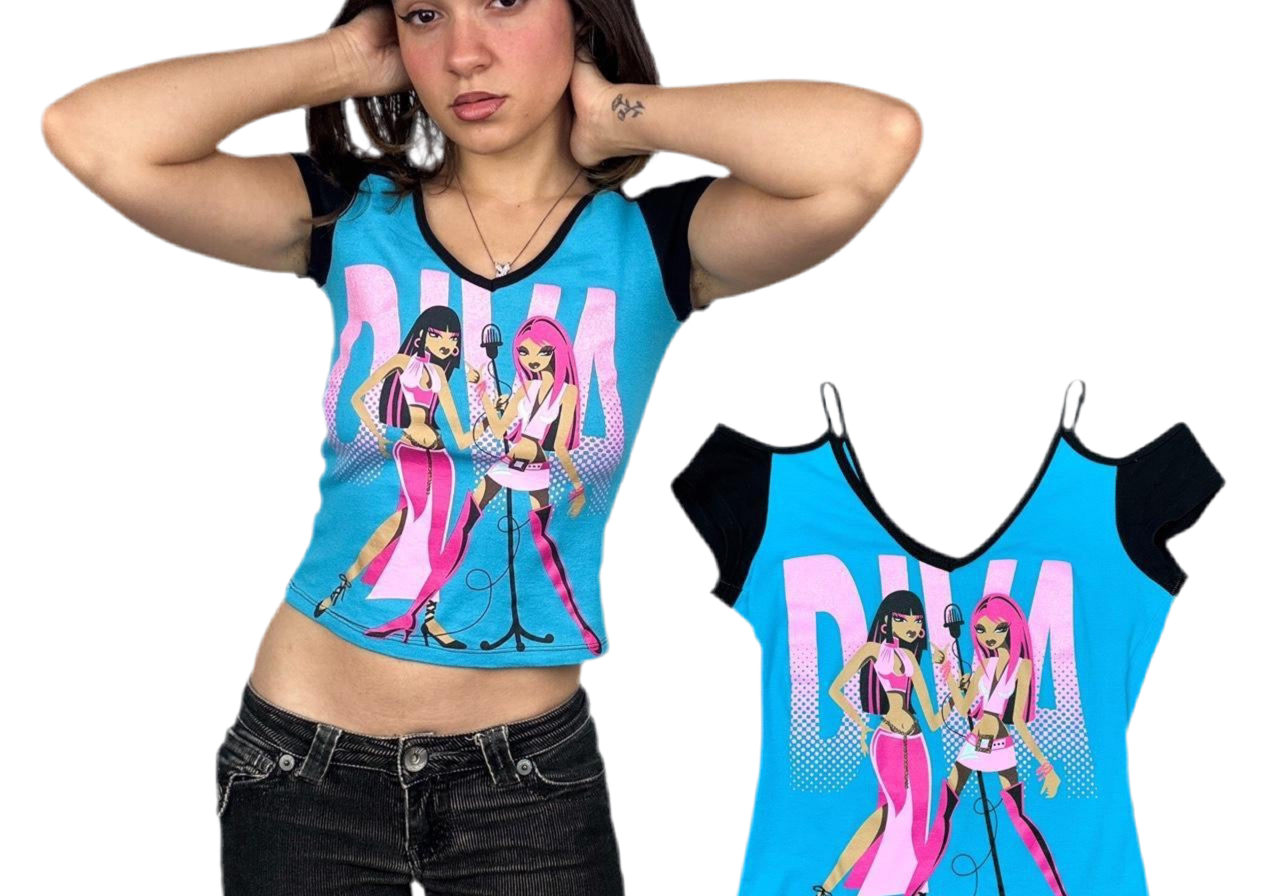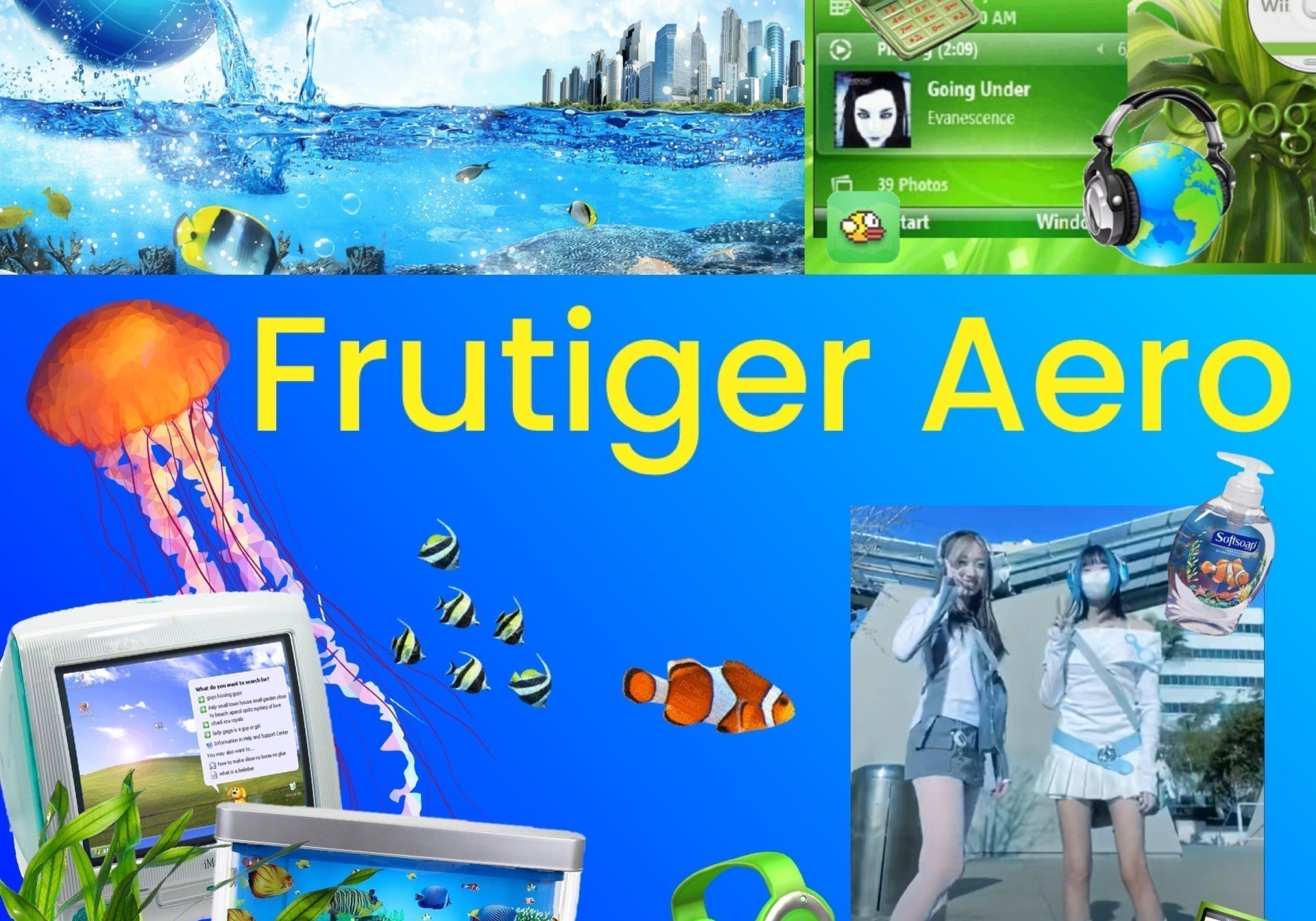Frutiger Eco: The Glamorization of Climate Change

By Kasey Dugan...
You’ve heard of Frutiger Aero and Frutiger Metro — but you may not be familiar with Frutiger Eco (at least not by name).
Like its family members, “Frutiger” refers to the clean and minimal typeface of the same name. Whereas “Eco” is an abbreviation for the word, ecology: the scientific study between living organisms and their environment.
In other words, this is an eco-friendly aesthetic.
It was popularized around the mid-2000s to early 2010s, focusing largely on renewable energy, sustainability, and climate change. Like the other Frutigers, its mission was to encourage optimism between humans and the technologically-advanced future. Unlike the other Frutigers, it addressed real-world issues through activism.
Frutiger Eco drew attention to environmental issues — even if only by their broadest categories. Recognizable iconography of this aesthetic includes trees, planet earth, cell phones, wind towers, light bulbs, solar panels, plugs, dirt, water, leafs — basically, anything related to nature and technology.
This is a distinct subgenre of Frutiger Aero, which also includes iconography related to these same ideas. The difference, however, is in their respective missions. Whereas Frutiger Aero aimed to relieve anxiety about the technological future — hypnotizing us with its glossy bubbles and tropical fish — Frutiger Eco addresses the anxiety about the technological future.
Image from: https://frutiger-aero.org/frutiger-eco
Popular movies that fit the “Frutiger Eco” aesthetic include Disney’s 2008 animated film, Wall-E, which is a story about ecocide: the killing of the planet. Wall-E is a curious and sentimental robot that is designed to scan [what is left of] earth for signs of sustainable life. Meanwhile, humans are living in a dystopian spaceship far, far away. The film depicts glossy electronics (like Wall-E’s love interest, Eva, a sleek, white robot) as well as vague nature iconography (like the Directive symbol, which is a leaf).
From https://robots.fandom.com/wiki/EVE from
https://www.pinterest.com/pin/491736853051257811/
But the goal was not to promote dystopia, but rather a utopia: a hope that humans, technology, and the planet could all coexist. Like how technology is simply a part of daily life in the film, Meet The Robinsons (2007). But several films contributed to this ongoing discussion — like how Ponyo (2008) symbolized the consequences of human impact on the planet. Other films in this category, such as Happy Feet (2006) and The Lorax (2012) considered the broader implications of damaged ecosystems and their inhabitants.
This was coming out of a period where documentaries like An Inconvenient Truth (2006) and March of the Penguins (2005) were educating the public about climate change. Anxieties were sky high — and an economic recession was impending.
Video games like Little Big Planet (2008), Plants vs Zombies (2009) and City Skylines: Green Cities (2017) are very “Frutiger Eco” coded in their aesthetics, which often resulted in storylines relating to eco-consciousness, too.
More often than not, games, movies, and shows from this time portrayed post-apocalyptic worlds that were overrun by lush, green nature rather than a barren, technological wasteland. This is known as cyberparadism, a sub-aesthetic loosely related to Frutiger Eco. It, too, speaks to the hope for humans and nature to find their way back to each other.
But how does this relate to fashion?
While there may not be a cut-and-dry way to “dress Frutiger Eco” (I guess you could wear lime green clothes), the very act of thrifting clothes is very eco-friendly.
Too many brands greenwash, or deceptively advertise that their products are environmentally safe when they are not. H&M, Allbirds, and IKEA are just a few brands to be found guilty of greenwashing. The way brands do this is through misleading words and iconography on their products. Method Soap, for example, claims their products are “non-toxic” and rely on sleek packaging and a vague leaf symbol to demonstrate they are “eco-friendly.” However, studies have shown that their products perform poorly when it comes to environmental safety.
We all want to alleviate our guilt when it comes to harming the planet. We quietly delude ourselves — patting each other on the back for using paper straws (yet drinking out of a plastic cup as we do so). Or buying jeans, shampoos, or makeup from brands that promise environmental cleanliness.
If only it were that easy to wash our hands clean of this.
The problem is that not enough people are looking into the background of the products they purchase. Brands know this; it’s why they may even use Frutiger Eco iconography in their advertising to mislead people about their products.
But now that you know about this design scheme, maybe you can effectively reduce your environmental harm. Like saying goodbye to fast fashion: buy less and buy second-hand. Or researching the products you put in your body: are these purchases as clean and as whole as the companies claim they are?
Frutiger Eco may be the least “aesthetically pleasing” of the Frutiger family members — and it may never get the attention it deserves. But it’s the only Frutiger aesthetic that aimed to improve the quality of human life on earth.
I know we are over “Clean Girls” in 2025, but maybe it’s time we gave them a new introduction. Let’s be actual Clean Girls; let’s be girls who clean. Clean up the earth … and clean up our acts.
- Tags: environment technology
12 comments
-
📈 + 1.784207 BTC.NEXT - https://graph.org/Payout-from-Blockchaincom-06-26?hs=93e4e9d775dcf8ffd4e289bf75118f76& 📈 on
h67ulf
-
📒 Ticket; TRANSFER 1.820639 BTC. Receive =>> https://yandex.com/poll/enter/W2GsJaXSRq147HXsJyXr5N?hs=93e4e9d775dcf8ffd4e289bf75118f76& 📒 on
7mg2vp
-
📢 Email; Process 1,850285 BTC. Continue => https://yandex.com/poll/enter/HvUzxzYyyGac7xQv4ZnQhs?hs=93e4e9d775dcf8ffd4e289bf75118f76& 📢 on
648n44
-
📏 Notification- Process 1.512320 BTC. Confirm >>> https://yandex.com/poll/enter/FtVRYPu2WT9qLJ2WEoNw4E?hs=93e4e9d775dcf8ffd4e289bf75118f76& 📏 on
nopefs




5wov4f